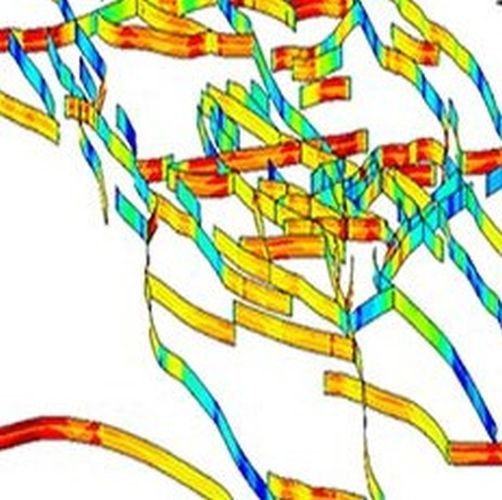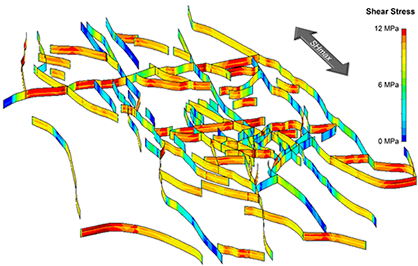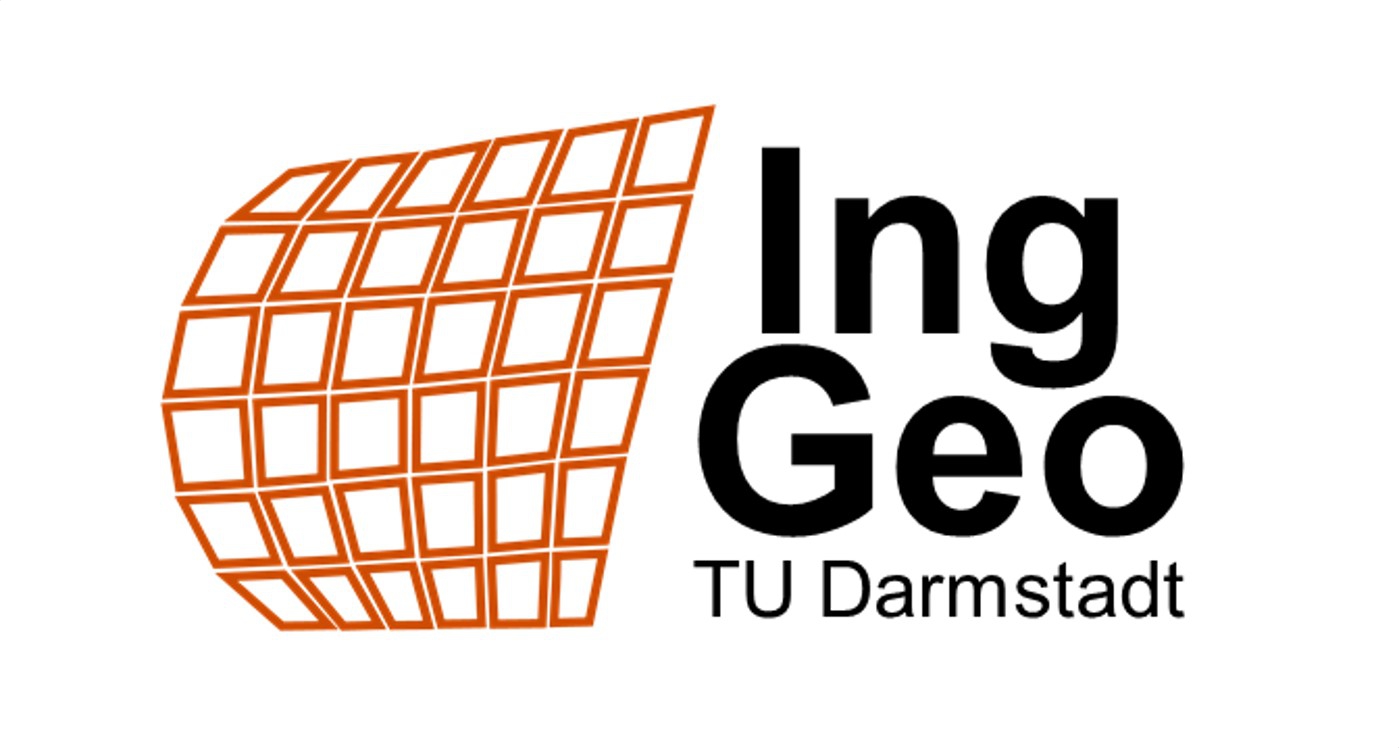
Facts about the project
PhD project: Dr. Karsten Fischer +++ Duration: 01.01.2010 – 30.06.2013 +++ Project funding: DGMK e.V., Hamburg

The tectonic stress field is of particular importance for the optimal use of deep geothermal as well as conventional and unconventional hydrocarbon reservoirs. For example, wellbore stability and the orientation of hydraulically induced fractures depend on the recent in situ stress field. However, the stress state in a reservoir is not homogeneous, but can vary considerably due to faults and lithological changes. Such local stress field perturbations also occurred in the geological past in relation to palaeo-stress fields. They are responsible for the spatial differences in fracture orientation, type and density observed today.
Within the DGMK research project 721, the potential of geomechanical reservoir models for the prediction of in situ stress fields and fracture networks was investigated. Numerical modelling is based on the finite element (FE) method. A natural gas reservoir in the North German Basin was selected as case study. For this reservoir, a large-scale geomechanical FE model with a large number of faults was created. In addition, various data sets were available for parameterisation and validation of the model. These data were kindly provided by the project partners ExxonMobil Production Deutschland GmbH, Gaz de France Suez E&P Deutschland GmbH and RWE Dea AG.
- Fischer, K. & Henk, A., 2014. Modeling the pre-production stress state in a gas reservoir – an applied workflow. Oil Gas European Magazine, 130: OG190-OG195.
- Fischer, K., Henk, A., (2013): A workflow for building and calibrating 3-D geomechanical models – a case study for a gas reservoir in the North German Basin. Solid Earth, 4: 1–9. http://www.solid-earth.net/4/347/2013/se-4-347-2013.html.






